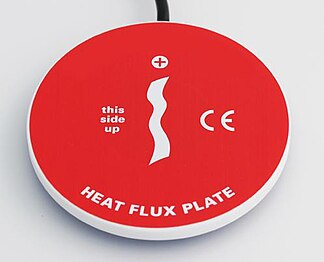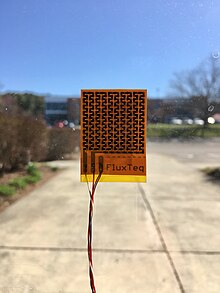
Back مستشعر تدفق حراري Arabic Датчык патоку цяпла Byelorussian Wärmeflusssensor German Sensor de flujo de calor Spanish Capteur de flux thermique French गर्मी प्रवाह सेन्सर Hindi Sensore di flusso di calore Italian 熱流センサ Japanese Warmtestroomsensor Dutch Czujnik strumienia ciepła Polish


A heat flux sensor is a transducer that generates an electrical signal proportional to the total heat rate applied to the surface of the sensor. The measured heat rate is divided by the surface area of the sensor to determine the heat flux.

The heat flux can have different origins; in principle convective, radiative as well as conductive heat can be measured. Heat flux sensors are known under different names, such as heat flux transducers, heat flux gauges, or heat flux plates. Some instruments are actually single-purpose heat flux sensors, like pyranometers for solar radiation measurement. Other heat flux sensors include Gardon gauges[1] (also known as a circular-foil gauge), thin-film thermopiles,[2] and Schmidt-Boelter gauges.[3]
- ^ R.Gardon, "An instrument for the direct measurement of intense thermal radiation", Rev. Sci. Instrum., 24, 366-370, 1953.
- ^ T.E. Diller, Advances in Heat Transfer, Vol. 23, p.297-298, Academic Press, 1993.
- ^ C.T. Kidd and C.G. Nelson, "How the Schmidt-Boelter gage really works," Proc. 41st Int. Instrum. Symp., Research Triangle Park, NC: ISA, 1995, 347-368